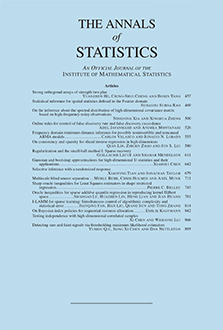Abstract
In classical statistics, Pinsker’s theorem provides an exact asymptotic minimax bound in nonparametric estimation, improving upon optimal rates of convergence results. We obtain a quantum version of the theorem by establishing asymptotic minimax results for estimation of the displacement vector in a quantum Gaussian white noise model, given by a sequence of shifted vacuum states. Analogous results are then obtained for estimation of a general pure state from an ensemble of identically prepared, independent quantum systems, using the recently established local asymptotic equivalence to the quantum Gaussian white noise model. Optimality holds with respect to the most fundamental distance measure for quantum states, that is, trace norm distance, and in a true quantum sense, allowing for all possible measurements. Adaptive estimators are also obtained for the above cases. As an application, we obtain asymptotic minimax adaptive estimators for Wigner functions of pure states.
Funding Statement
Supported in part by NSF Grants DMS-1407600 and DMS-1915884.
Citation
Samriddha Lahiry. Michael Nussbaum. "Minimax nonparametric estimation of pure quantum states." Ann. Statist. 50 (1) 430 - 459, February 2022. https://doi.org/10.1214/21-AOS2115
Information





